Longer than they are wide, oblong fruits seem almost sculpted by nature with intention — sleek, stretched, and aerodynamically streamlined as if designed to slip from tree to table with purpose. There’s something quietly powerful about their shape: they don’t sit still like round fruits or flaunt curves like pears — instead, they stretch.
From the humble cucumber (yes, it’s a fruit!) to exotic treasures like kiwano and Feijoa, oblong fruits speak to an underlying truth of the natural world: growth often follows direction. Whether sliced into fruit salads, juiced, simmered, or eaten straight from the skin, these elongated beauties show up across continents as refreshing snacks, nutrient stores, and cultural cornerstones. The collection below celebrates the many flavors and forms of fruits that don’t just grow — they stretch.
1. Banana
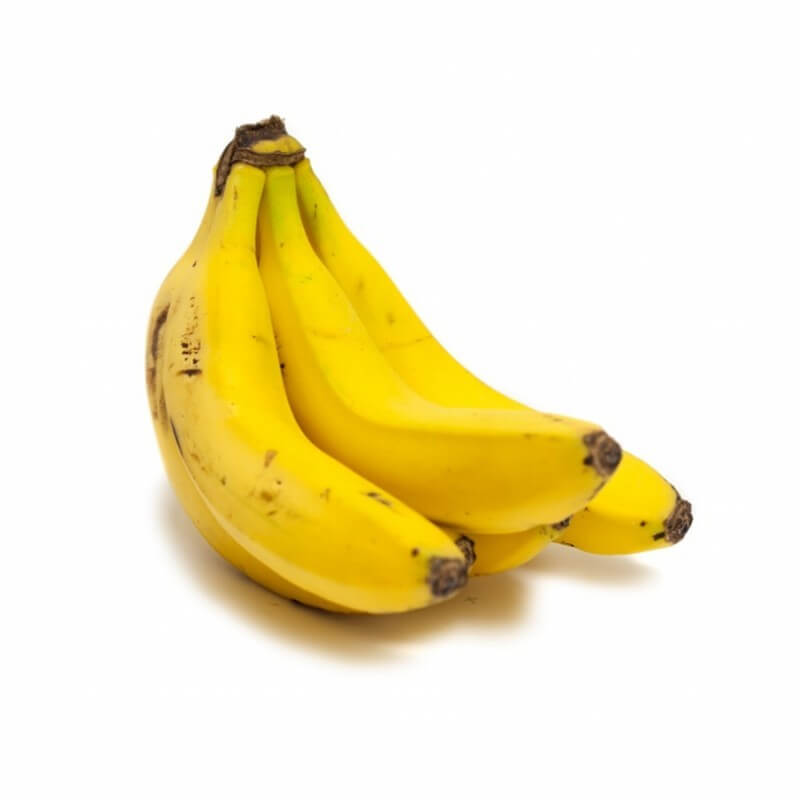
The banana is one of the world’s most recognizable oblong fruits — long, gently curved, and encased in a bright yellow peel. Beneath the skin lies soft, creamy flesh rich in natural sugars and potassium. From smoothies to breads and desserts, their shape makes them perfect for slicing, packing, and snacking upright in nature’s own convenient wrapper.
2. Horned Melon (Kiwano)
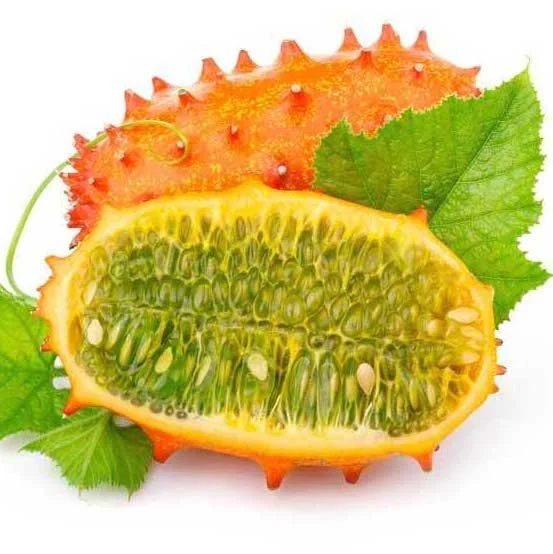
With a distinct oblong body studded with bright orange spikes, the horned melon looks almost extraterrestrial. Native to Africa, its jelly-green interior has a refreshing cucumber-lime flavor. While its shape is elongated, its horned texture sets it apart from other smooth-skinned oblong fruits. It’s rich in water, vitamin C, and antioxidants — a rare fruit both ornamental and edible.
3. Melons (Various Varieties)
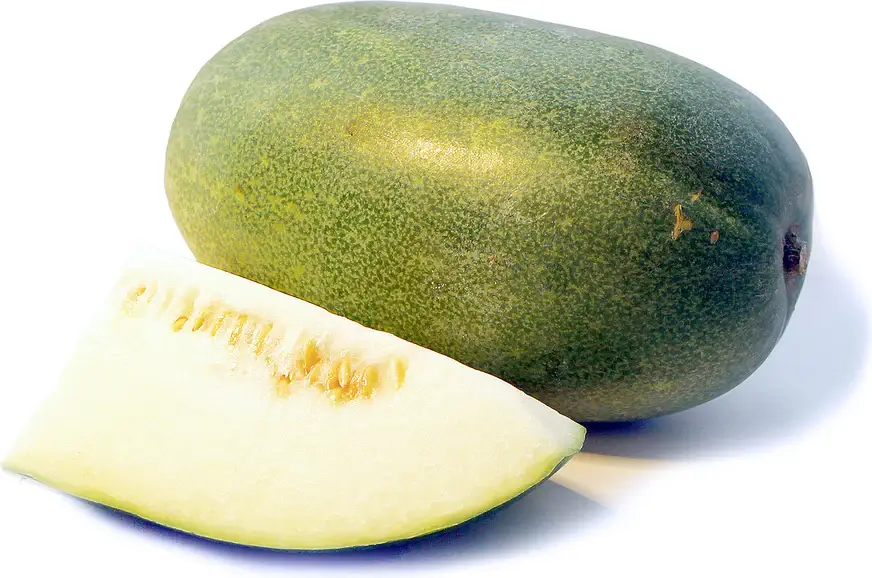
Several melon types — particularly cantaloupe, honeydew, and Santa Claus melons — lean toward an oblong shape instead of roundness. These fruits feature smooth or netted rinds and juicy, sweet flesh in shades ranging from orange to pale green. Oblong melons are popular for picnics and summer eating, offering large sliceability and hydration packed into every scoop.
4. Date
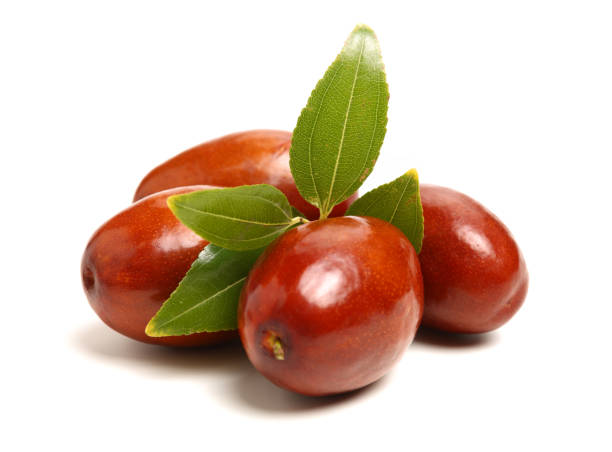
The date is a small, wrinkled, glossy oblong fruit harvested from the date palm. Its chewy, sticky flesh is intensely sweet and caramel-like — a natural candy revered across the Middle East and North Africa. Dates are nutrient-dense, providing fiber, potassium, and iron. Their oblong, tapering form makes them ideal for stuffing with nuts or forming into energy bites.
5. Pawpaw
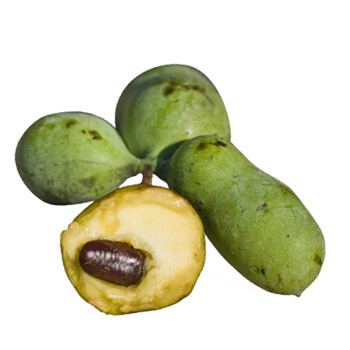
Not to be confused with papaya, the North American pawpaw has a thick green-yellow skin and an oblong potato-like appearance. Inside lies creamy, custard-like flesh tasting of banana, mango, and melon combined. Though delicate and rarely seen in stores, pawpaws are nutrient-rich, high in protein, vitamins, and tropical flavor — a truly underrated oblong treasure.
6. Feijoa
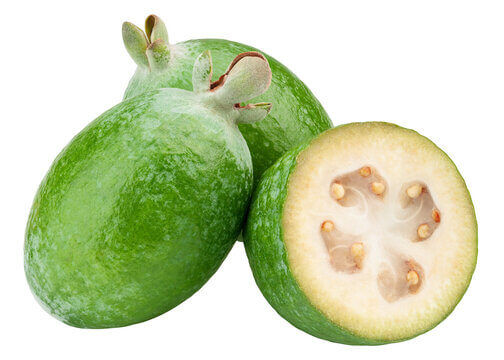
Also known as pineapple guava, feijoa fruits are small, firm, and oblong-oval with dark green skin. Break one open to release a sweet, perfumed aroma and reveal jelly-like seed pulp surrounded by grainy, white flesh. Native to Brazil, they’re commonly eaten spooned fresh or used in jams and chutneys. Rich in vitamin C and dietary fiber, feijoas bring tangy floral complexity to any fruit platter.
7. Eggplant
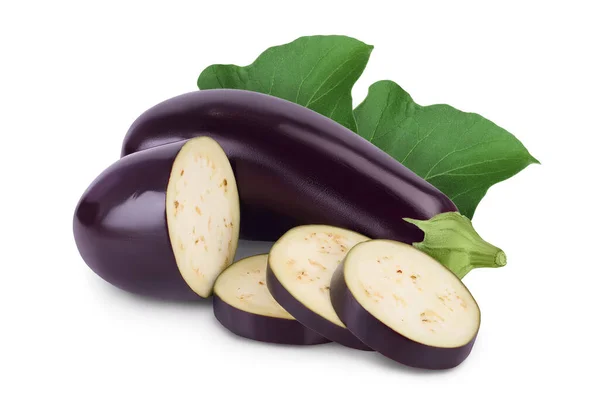
Botanically a berry, eggplant has a glossy, deep violet-purple skin stretched into a sleek oblong form. Originally from India, it carries a spongy interior perfect for absorbing savory flavors in dishes worldwide — from Mediterranean moussaka to Asian stir-fries. Nutritionally, it’s low-calorie and loaded with antioxidants like nasunin. Its oblong shape lends itself to slicing, stuffing, and grilling.
8. Cucumber
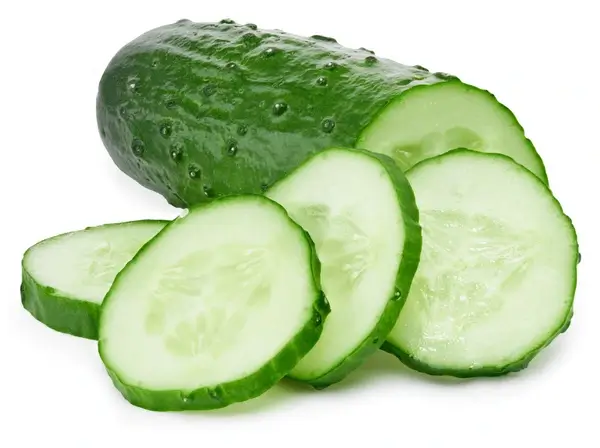
Though eaten as a vegetable, cucumber is technically a fruit — long, cylindrical, oblong, and crisp. Its cool, refreshing flesh is high in water content, making it popular in salads and pickles. Cucumbers are hydrating and low in calories, often consumed to beat the heat. Their straight oblong shape makes them ideal for slicing into even rounds.
9. Papaya

Elongated varieties of papaya grow in a smooth oblong form, tapering gently at both ends. Slice one open to uncover vibrant orange-red flesh and a center cavity packed with glossy black seeds. Soft, juicy, and musky-sweet, papayas are rich in digestive enzyme papain, vitamin C, and beta-carotene. They’re eaten fresh, juiced, or paired with lime for a tropical treat.
10. Jackfruit
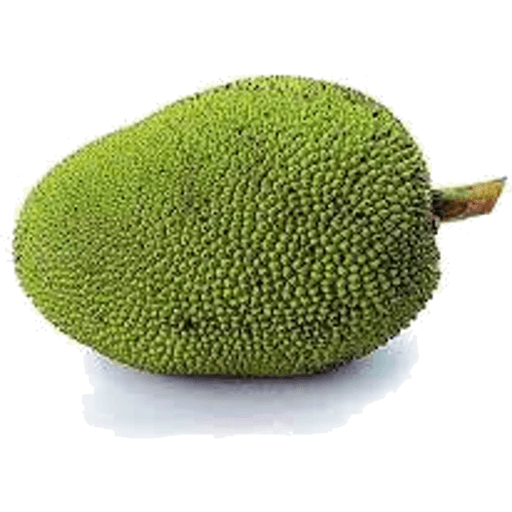
Jackfruit is the largest tree-borne fruit in the world and often develops a huge oblong, slightly tapered shape. Covered in green, knobby skin, it contains hundreds of sweet, aromatic golden pods inside. Unripe, it is used as a savory, meat-like substitute due to its fibrous texture; ripe, it becomes candy-sweet. Jackfruit is rich in fiber, potassium, and gut-friendly prebiotics.
11. Cassabanana

This striking tropical fruit is long and slender with a hard, smooth skin ranging from deep orange to burgundy. Its elongated shape can reach up to 2 feet. Inside lies fragrant orange flesh used in preserves, desserts, and refreshing drinks across South America. Cassabanana has a melon-like taste and aroma and is valued both as food and ornamental vine fruit.
12. Tayberry

A cross between raspberry and blackberry, the tayberry grows into an elongated, tapering oblong berry rather than round. Its deep red-purple drupelets burst with fragrant sweetness and tartness.
13. Akebia
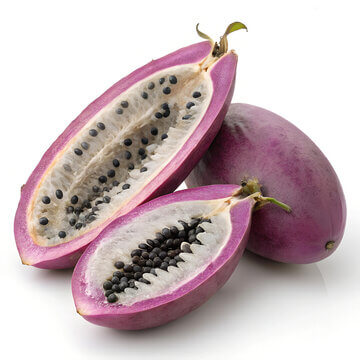
Also called chocolate vine fruit, akebia grows as a sausage-like oblong pod that splits open when ripe to reveal white, jellylike pulp dotted with shiny black seeds. It has a sweet subtle taste while the purple skin is sometimes cooked as a vegetable. Rare and visually unusual, akebia is prized for its aromatic flavor and ornamental curiosity.
14. Bilimbi
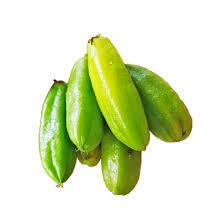
Bilimbi fruit is smooth, glossy, and distinctly oblong — almost cucumber-like, but only a few inches long. Bright green and intensely sour, it’s used for pickles, chutneys, and curries across Southeast Asia and India. Its juicy, acidic pulp makes it a natural souring agent rich in vitamin C and antioxidants, though it’s rarely eaten plain due to its sharp tang.
15. Cupuaçu
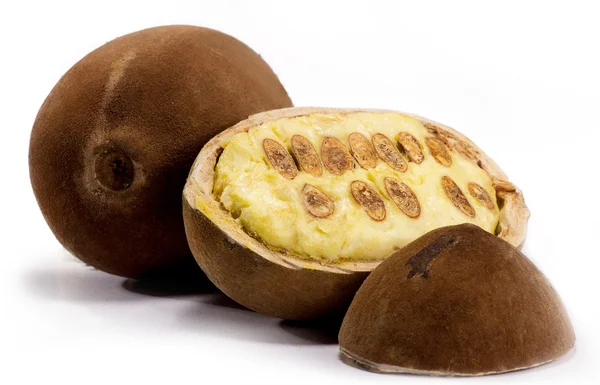
Native to the Amazon rainforest, the cupuaçu is a brown, oblong fruit related to cacao. It has a thick, leathery shell and creamy white pulp with an exotic aroma blending chocolate, pineapple, and pear. Used in juices, desserts, and cosmetic products, cupuaçu is rich in antioxidants and healthy fats, making it both a culinary and wellness favorite.
16. Finger Lime
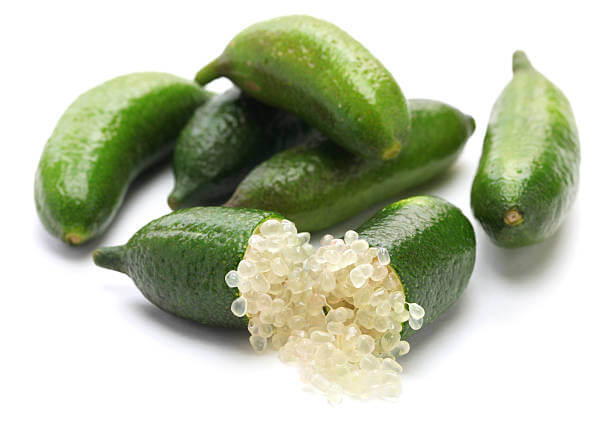
Long, cylindrical, and finger-like, this Australian native is a unique oblong citrus. Slice it open and tiny caviar-like pearls spill out, bursting with tangy lime flavor. Its shape and texture have earned it the nickname “citrus caviar.” Finger limes are used to garnish seafood, cocktails, and desserts, delivering vitamin C and instant culinary drama.
17. Giant Granadilla (Tumboa)
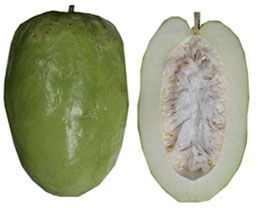
The largest passionfruit species grows in an elongated oval-oblong shape with smooth green or yellow skin. Crack it open to reveal aromatic pulp surrounding edible seeds. They have mild, sweet flavors and are often eaten fresh, juiced, or spooned over desserts.
18. Bottle Gourd
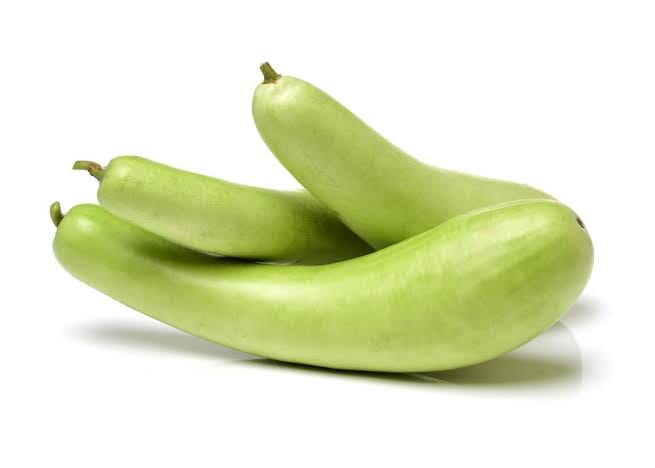
Some cultivars of bottle gourd grow into long oblong forms rather than pear-shaped. Used widely in Asian, African, and Caribbean cooking, this pale green fruit has a mild flavor and high water content. Dried gourds have been used traditionally as bottles, instruments, and utensils — making bottle gourds not only nourishing but culturally significant.
19. Monstera Deliciosa (Swiss Cheese Fruit)
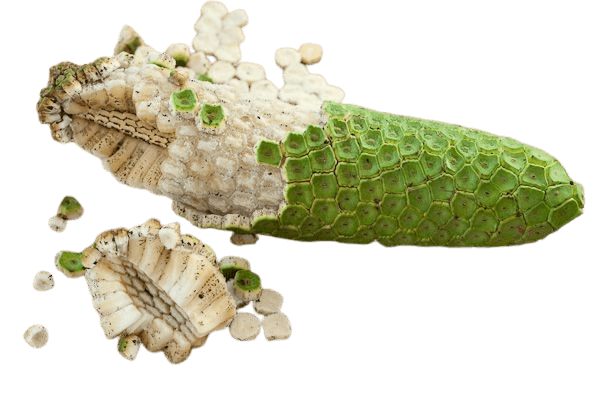
This unusual fruit begins as a long, hexagon-patterned oblong ear-like structure. As it ripens, the scales fall off to reveal sections of creamy, tropical-sweet flesh tasting like pineapple and banana. Its oblong size and layered appearance make it one of the most visually fascinating fruits in the world.
20. Noni
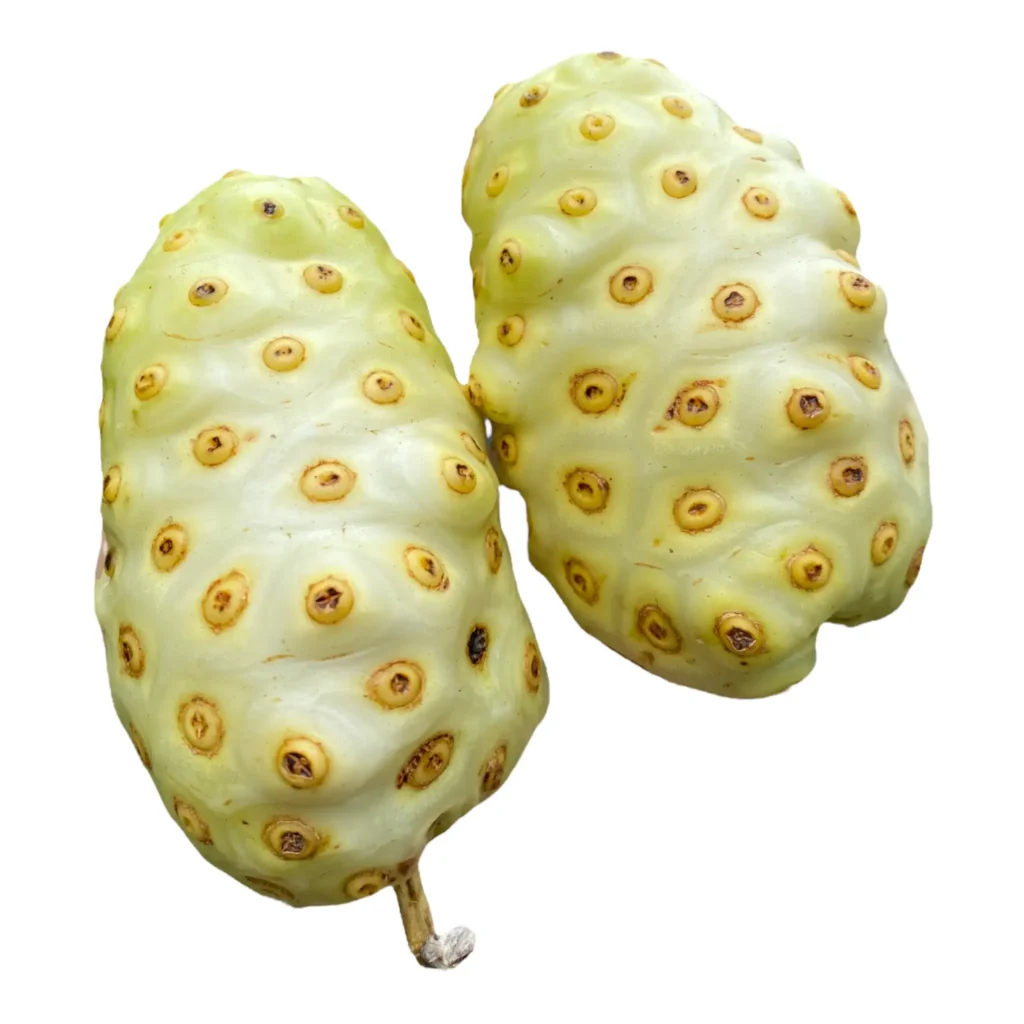
Noni fruit forms a small, elongated oval-oblong shape with translucent, bumpy, almost reptilian skin. Native to Polynesia and Southeast Asia, it has a strong, pungent odor and bitter flavor often compared to cheese. Despite its scent, noni juice is popular in traditional medicine, credited with immune-boosting and anti-inflammatory benefits.
21. Zucchini
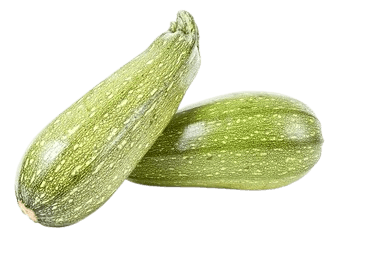
Technically a fruit, zucchini is long, smooth, and cylindrical-oblong — perfect for slicing into rounds or ribbons. Mild, tender, and subtly sweet, zucchinis are incredibly versatile: grilled, roasted, spiralized, or baked into breads. Low in calories and rich in vitamin A, manganese, and water content, they’re a summertime staple with endless culinary uses.
22. Banana-Passion-Fruit (Curuba)
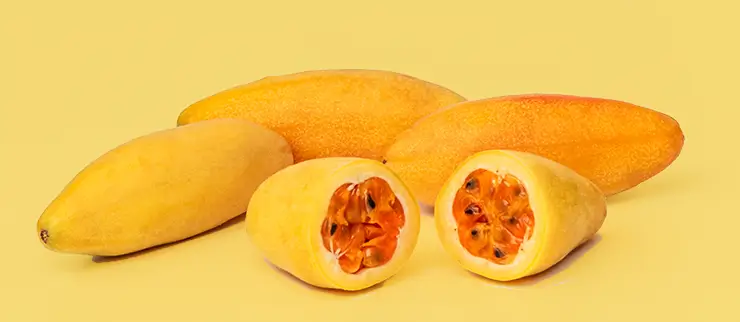
Also known as curuba or banana passionfruit, this tropical delicacy features an elongated, banana-like oblong shape with smooth yellow-orange skin. Slice it open and you’ll discover a luscious cavity of bright orange pulp packed with black crunchy seeds — intensely aromatic with the classic tangy-sweet flavor of passionfruit. Rich in vitamin C, fiber, and mood-boosting compounds, it offers both exotic taste and nutritional punch in its uniquely stretched-out form.
